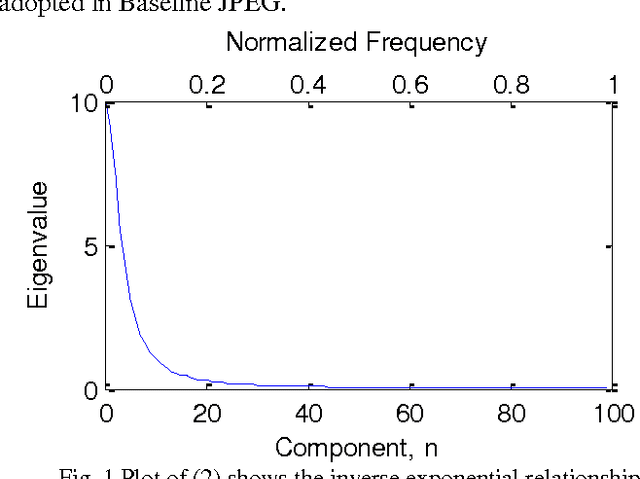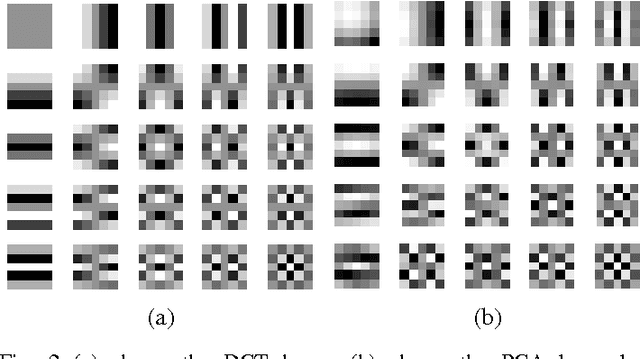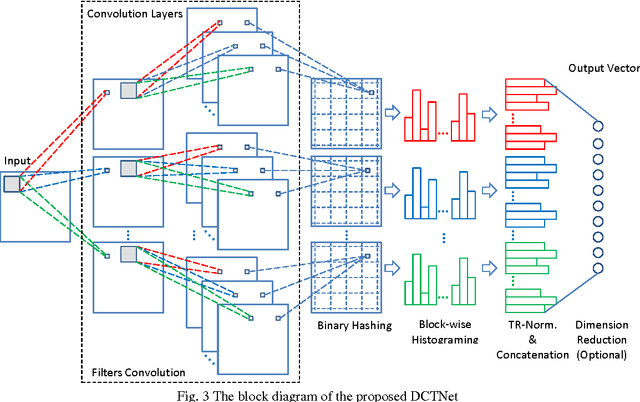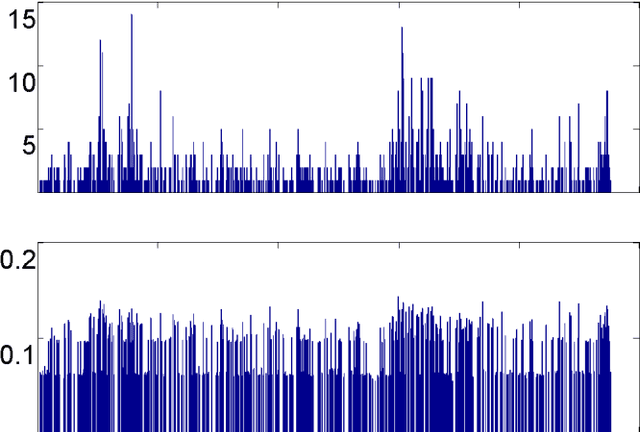Cong Jie Ng
Multi-Fold Gabor, PCA and ICA Filter Convolution Descriptor for Face Recognition
Oct 19, 2017



Abstract:This paper devises a new means of filter diversification, dubbed multi-fold filter convolution (M-FFC), for face recognition. On the assumption that M-FFC receives single-scale Gabor filters of varying orientations as input, these filters are self-cross convolved by M-fold to instantiate a filter offspring set. The M-FFC flexibility also permits cross convolution amongst Gabor filters and other filter banks of profoundly dissimilar traits, e.g., principal component analysis (PCA) filters, and independent component analysis (ICA) filters. The 2-FFC of Gabor, PCA and ICA filters thus yields three offspring sets: (1) Gabor filters solely, (2) Gabor-PCA filters, and (3) Gabor-ICA filters, to render the learning-free and the learning-based 2-FFC descriptors. To facilitate a sensible Gabor filter selection for M-FFC, the 40 multi-scale, multi-orientation Gabor filters are condensed into 8 elementary filters. Aside from that, an average histogram pooling operator is employed to leverage the 2-FFC histogram features, prior to the final whitening PCA compression. The empirical results substantiate that the 2-FFC descriptors prevail over, or on par with, other face descriptors on both identification and verification tasks.
DCTNet : A Simple Learning-free Approach for Face Recognition
Sep 29, 2015



Abstract:PCANet was proposed as a lightweight deep learning network that mainly leverages Principal Component Analysis (PCA) to learn multistage filter banks followed by binarization and block-wise histograming. PCANet was shown worked surprisingly well in various image classification tasks. However, PCANet is data-dependence hence inflexible. In this paper, we proposed a data-independence network, dubbed DCTNet for face recognition in which we adopt Discrete Cosine Transform (DCT) as filter banks in place of PCA. This is motivated by the fact that 2D DCT basis is indeed a good approximation for high ranked eigenvectors of PCA. Both 2D DCT and PCA resemble a kind of modulated sine-wave patterns, which can be perceived as a bandpass filter bank. DCTNet is free from learning as 2D DCT bases can be computed in advance. Besides that, we also proposed an effective method to regulate the block-wise histogram feature vector of DCTNet for robustness. It is shown to provide surprising performance boost when the probe image is considerably different in appearance from the gallery image. We evaluate the performance of DCTNet extensively on a number of benchmark face databases and being able to achieve on par with or often better accuracy performance than PCANet.
 Add to Chrome
Add to Chrome Add to Firefox
Add to Firefox Add to Edge
Add to Edge